 Your new post is loading...
 Your new post is loading...
When Americans encounter news on social media, how much they trust the content is determined less by who creates the news than by who shares it, according to a new experimental study from the Media Insight Project, a collaboration between the American Press Institute and The Associated Press-NORC Center for Public Affairs Research. Whether readers trust the sharer, indeed, matters more than who produces the article —or even whether the article is produced by a real news organization or a fictional one, the study finds. Who shares an article on social media influences whether people trust it, research shows As social platforms such as Facebook or Twitter become major thoroughfares for news, the news organization that does the original reporting still matters. But the study demonstrates that who shares an article on a social media site like Facebook has an even bigger influence on whether people trust what they see....
Dear President Trump, As journalists and founders of a network of media professionals in over 180 countries, we are seriously concerned with your attacks on the news media and your disregard for the truth itself. Your attempt to discredit legitimate media organizations, as well as the barring of media companies from your press conferences last week, are an insult to our esteemed colleagues who risk their lives every day to report the truth, and to the United States Constitution you took an oath to defend. Attacking the news media with a broad brush and attempting to delegitimize media outlets critical of the government is exactly how Hugo Chavez and Vladimir Putin began their presidencies. It was the first step they took in weakening democracy in Venezuela and Russia. By driving a wedge between the people and the media, and by using the power of the presidency to intimidate journalists, these leaders built corrupt, authoritarian regimes with few checks on their power and limited recourse against human rights violations. Thanks to our Constitution, our deep cultural tradition of press freedom, and the surging desire of the American people to access quality journalism, those tactics will not work in the United States....
As journalists continue to critique their coverage of the presidential election, Nieman Reports is publishing an ongoing series of articles exploring the issues, challenges and opportunities—from newsroom diversity to fake news to community news outlets—that will inform reporting going forward. The full list of articles is below.
Since winning the presidential election, Donald Trump has reportedly skipped out on the majority of his intelligence briefings; this past Sunday, Trump made headlines after sharing false information blaming his loss of the popular vote on mass voter fraud — a claim previously reported by the conspiracy news site Infowars. It’s been widely reported that Trump is an obsessive consumer of cable news — he has himself admitted to receiving at least a portion of his military advice from “the shows.” But, pundits and chyrons aside, relatively little is known about where the next president will find the news and commentary that might color his time in office. What exactly is Trump’s media diet?
What we know of Trump’s relationship to the modern internet suggests the president-elect rarely browses it himself. Trump campaign press secretary Hope Hicks told GQ he relies largely on Google News printouts from staffers and sparingly reads his own email. And a 2007 deposition suggests that Trump doesn’t use a computer or carry a smartphone during the daytime hours, and often dictates daytime tweets to his assistants.
To better understand Trump’s media consumption, BuzzFeed News turned to the president-elect’s largest source of public proclamations and shared news: Twitter. While Trump’s media consumption and methods appear opaque and unconventional, the stories he chooses to share with his now 16 million–plus followers offer a unique window into the news and commentary that catch his eye...
Our analysis revealed a media ecosystem that appears to largely reinforce and affirm the views publicly expressed by Trump and his closest advisers. The news stories Trump tweets share several characteristics: 1) They often favor sensationalism over facts and reporting; 2) They frequently echo direct quotes from Trump himself or his closest advisers; and 3) They routinely malign his enemies and vindicate his most controversial opinions.... The stories shared by Trump’s account throughout his campaign suggest the president-elect has constructed a powerful online filter bubble that largely flatters and confirms that which he claims to be true....
Since Election Day, President-elect Donald J. Trump has proposed a U-turn in American diplomatic relations with Cuba, boasted about negotiations with a major manufacturer, trumpeted false claims about millions of illegal votes and hinted that he might upend current free speech laws by banning flag burning.
All in 140 characters or less.
As news organizations grapple with covering a commander in chief unlike any other, Mr. Trump’s Twitter account — a bully pulpit, propaganda weapon and attention magnet all rolled into one — has quickly emerged as a fresh journalistic challenge and a source of lively debate.
How to cover a president’s pronouncements when they are both provocative and maddeningly vague? Does an early-morning tweet amount to a planned shift in American policy? Should news outlets, as some readers argue, ignore clearly untrue tweets, rather than amplify falsehoods further?...
Paul Horner is a professional fake news writer, whose completely made-up story about the Amish committing their vote to Trump got over 134,000 likes on Facebook; his story about Obama signing an executive order to invalidate the election results has over 250,000 likes. This week, The Washington Post’s Caitlin Dewey interviewed Horner--who is stunned that his work gets accepted as true. “I think Trump is in the White House because of me. His followers don’t fact-check anything -- they’ll post everything, believe anything. His campaign manager posted my story about a protester getting paid $3,500 as fact. Like, I made that up. I posted a fake ad on Craigslist… I thought they’d fact-check it, and it’d make them look worse. I mean that’s how this always works: Someone posts something I write, then they find out it’s false, then they look like idiots. But Trump supporters -- they just keep running with it! They never fact-check anything!”...
|
Facebook has started deploying new weapons in its battle against fake news. The election of Donald Trump to the presidency of the United States has led to a lot of soul-searching, not least of which by the world’s largest social network. Facebook has been repeatedly accused of facilitating and magnifying an ecosystem of websites that spread false information and conspiracy theories across the platform. That criticism led Facebook to announce late last year that it would be collaborating with “third-party fact checking organizations” to identify stories that don’t hold up to scrutiny, and warn users when they try to post these stories. The new feature appears to be picking up steam. The Facebook fact-checker has begun flagging a story that was shared widely on the lead-up to St. Patrick’s Day (March 17) that falsely claims thousands of Irish people were brought to the United States as slaves. This is what happens when you try to share the story on Facebook...
This chart shows U.S. voters' attitudes towards the trustworthiness of the media and/or the president (in percent) Never since Richard Nixon was in office more than 40 years ago, has a President had such an antagonistic relationship with the media like Donald Trump has today. He considers himself at war with the media and calls outlets whose reporting he disapproves of “fake news”. There seems to be a corrosion of trust in either the President or the so-called Fourth Estate, depending on your political preferences....
More than five years ago, Tom Rosenstiel and Bill Kovach released their guide to helping news consumers sort fact from fiction. “Blur: How to Know What’s True in the Age of Information Overload” covers many topics — how to evaluate sources, how to know whether a news account is complete, how to verify questionable claims — that are timely given the avalanche of information that circulated during this election year. One line in the first chapter is particularly prescient given the recent influx of fake news (wholly false stories) and misinformation (false or inaccurate information): “Citizens have more voice, but those who would manipulate the public for political gain or profit — be it corporations or the government — have more direct access to the public as well.” Rosenstiel could never have predicted the details of how this would soon play out: teenagers in Macedonia, among others, profiting off fake news they created about the 2016 presidential election that spread quickly through social media. How would he amend his book given all that’s happened in the last year?...
More bad news about fake news: A new survey from Morning Consult finds more than 70% of Americans have heard about the “fake news” controversy, and nearly half (49%) say they have been exposed to fake news at least once a day through Facebook and Twitter.
In addition, 69% of those polled said they have started to read a news story only to realize later that it wasn’t real.
On the question of whether Facebook, Twitter, and Google should be able to censor fake news, a majority of Americans say they are comfortable with tech companies censoring fake news — 71% said it was appropriate for Google, Facebook and Twitter to remove fake news, and 67% said it was appropriate for Web service providers to remove it.
With regard to who is most responsible for policing fake news, Americans think they and social media sites are most responsible for policing fake news, but believe all actors must play a role. For example, 24% of Americans said "the person reading the news" is the most responsible for ensuring they are not exposed, followed by Facebook and Twitter at 17%. The government comes in third with 14% of the vote, followed by Web services providers at 10%, and search engines (such as Google) at 9%.
If you thought you heard the last on fake news, you were sadly mistaken.
A Stanford study found that the majority of middle school students can’t tell the difference between real news and fake news. In fact, 82 percent couldn’t distinguish between a real news story on a website and a “sponsored content” post.
Of the 8,704 students studied (ranging in age from middle school to college level), four in ten high-school students believed that the region near Japan’s Fukushima nuclear plant was toxic after seeing an unsourced photo of deformed daisies coupled with a headline about the Japanese area. The photo, keep in mind, had no source or location attribution. Meanwhile, two out of every three middle-schoolers were fooled by an article on financial preparedness penned by a bank executive.
It seems that those surveyed in the study were judging validity of news on Twitter based on the amount of detail in the tweet and whether or not a large photo was attached, rather than focusing on the source of the tweet.
The WSJ, which first reported on the study, says that a big part of solving this problem among young people comes down to education, both at school and at home....
|



 Your new post is loading...
Your new post is loading...

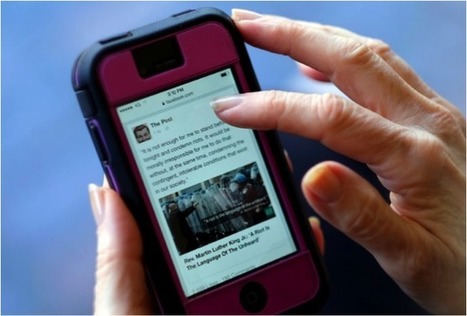

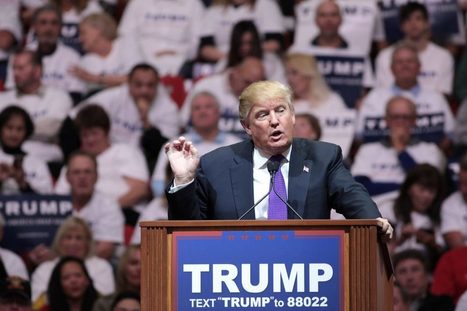

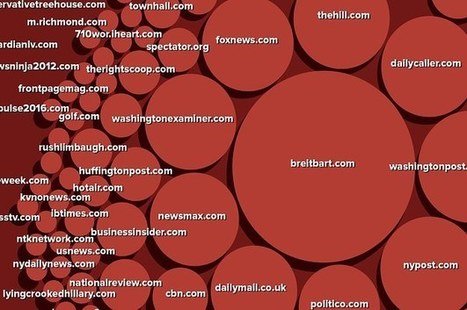

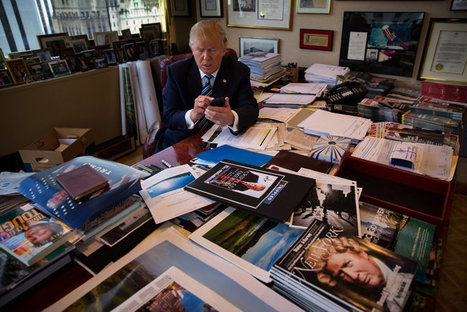
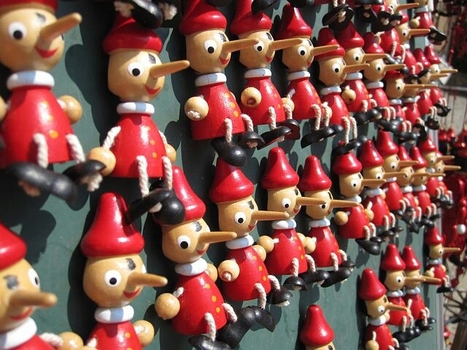
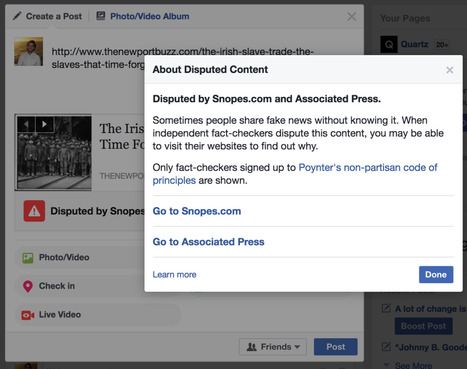

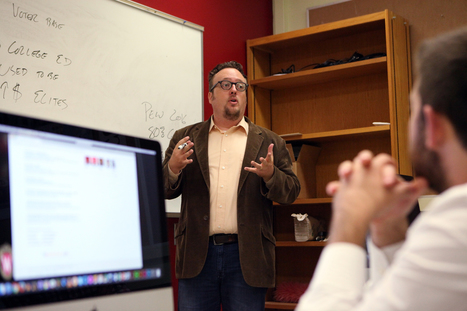

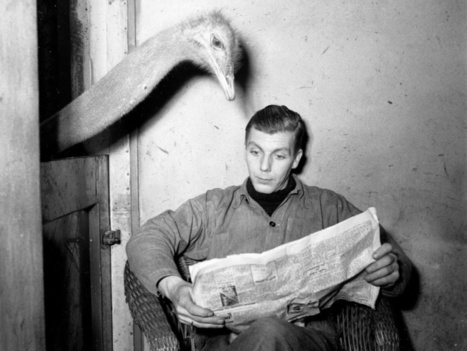






When it comes to fake news, who shared it is a big trust factor.